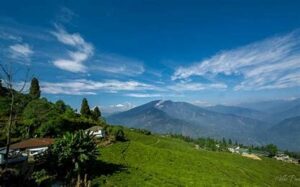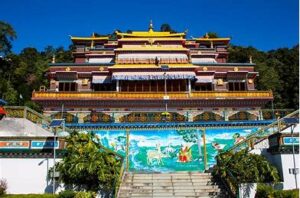Nature’s marvels just cannot be explained. Meghalaya’s turning clouds have sculpted yet another nature’s miracle. Sited within this northeastern state lies a treasure trove of bottomless wonders, the magnificent Krem Chympe. It is the 5th longest cave in India. It is 12,434 m long.
History
One of the lesser-known things about Meghalaya is that it’s the land of caves. Krem Chympe’s history stretches back millions of years, and evidence of its past inhabitants can be found scattered throughout the cave. Elephant bones have been discovered within its depths, hinting at a time when these gentle giants roamed the region.
A few decades back, the British explored the caves here as a sport. However, since the 1990s Meghalaya has its own association to look for such caves. By 2015, 1547 caves were explored. Out of India’s 10 deepest caves, 9 lie in Meghalaya itself.
Caves of Krem Chympe
There are at least 1,200 documented caves in this area. Meghalaya boasts some of the longest and most awe-inspiring subterranean systems in the world. Krem Chympe means “hidden river” in the Khasi language. This 10.5 km long marvel is not just a cave; but an ecosystem of its own.
Krem Chympe is more than just a cave; it’s a portal to a hidden world- Meghalaya’s crown jewel in the realm of caves. Amidst the forests of Jaintia Hills district, following a 3 km trek from Khaddum village leads you to the entrance of Krem Chympe cave.
Structure of the caves
It is a large limestone river cave. The cave is built on high concentrations of calcium carbonate. For millions of years, the acid rain has carved out the depths of these caves. The caves in itself are built of limestone, untouched by humans. The rain has cut through the rocks giving each one a unique texture and marvel.
Dams
There are many natural dams found in this area. The locals call them ‘gour’. It navigates over 50 natural dams that add to the cave’s dramatic allure. These stunning formations grace the river passage, some towering up to 12 metres
high. It has created some crystal-clear pools, as deep as 8 metres. These gours are formed by the gradual deposition of calcium carbonate from the cave water, and their intricate shapes resemble miniature dams, hence the name.
Beyond the dams
Unlike most caves, Krem Chympe is a living, breathing entity with a vibrant river coursing through its heart. This makes it a resurgent cave, meaning the river disappears underground at some point and resurfaces dramatically at the cave’s mouth, known locally as Sielkan – Pielkhlieng Pouk.
Fresh Lakes
Covering these caves are crystal-clear lakes which are 5 to 9m deep themselves. Its depths involve swimming over 3.5 kilometres through a series of interconnected lakes.
Ecosystems
Large colonies of bats live have adjusted their ways into the cave rocks.These winged creatures flit through the darkness, adding an air of mystery and intrigue to the cave’s ambiance. The river cave supports the flora and fauna quite harmoniously.
Recently, the world’s largest cavefish was discovered right within Krem Chympe! This translucent cavefish is 40cm long, keeping a stark difference from the usual size of cavefish somewhere between 3-13cm. These organisms have adapted themselves to the darkness of the cave and have developed unique features. The 40cm cavefish is blind, devoid of eyes.
These gour’s have built fragile ecosystems inside it, adapting their existence to living inside rock caves. Untouched, they sustain themselves harmoniously.
Culture
For the indigenous communities settled around Krem Chympe in Meghalaya’s Jaintia Hills, the cave is not just a geological marvel. It is a thread enticing their culture. For generations, their lives have resonated with the rumours of ancestral fictions echoing within its hollows.
Krem Chympe finds its place in the creation myths of the Jaintia people. Legend speaks of U Thlen, the mythical spider goddess, who wove the world into existence and used the cave as her loom. This sacred association fills the cave with immense religious significance. Offerings are made to appease the spirits residing within, and rituals for fertility and good health are often conducted at its opening.
The cave’s physical features are has cultural significance. The gours, with their cascading beauty,are seen as symbols of abundance and prosperity.The ever-flowing river is revered as a source of spiritual cleansing and renewal.
This place plays a role in their everyday life as well. Traditional songs and folktales narrate the cave’s secrets and dangers, passed down through generations. Local artisans draw inspiration from its formations, crafting intricate wood carvings and paintings that depict its wonders.
However, the relationship between the communities and Krem Chympe goes beyond worship. The cave has long served as a source of sustenance. The communities have been utilising its guano for fertiliser and fishing in its clear pools for food. This deep dependence fosters a sense of responsibility, leading to traditional practices of conservation and sustainable use.
Festivals around the cave
The festivals lie on the prime principle of respecting the ecosystem and preservation. To keep the lakes undisturbed, they conduct all their rituals on the shore, seeking harmony and blessings from their ancestral past. They believe the energies floating around are of purity and harmony. These lakes are a sanctuary of their beliefs and traditions held on generation after generation.
Conclusion
Located in Jantia hills, Krem is known for its mystical caves, deep lakes and hidden ecosystem. It is just one of the many awe-inspiring caves that dot the landscape of Meghalaya, aptly nicknamed the “Land of Caves.” Each gur, each rock formation, whispers tales of ancient floods and the relentless sculpting hand of time.
Krem Chympe is a unique and fragile ecosystem. It’s a reminder of the Earth’s hidden wonders, a witness to the elasticity of life, where geological forces continue to form unthinkable wonders. It echoes ancestral tales, carrying stories of a culture deeply knotted with the cave’s soul.
Unravelling a billion untold stories, one chapter at a time, Humans of Northeast takes you on a discovery through vibrant Northeast India – a land rich in people, places, and culture. Ready to immerse yourself in more such stories?
Visit our page HONEI to read more about narratives that inspire and uplift.




